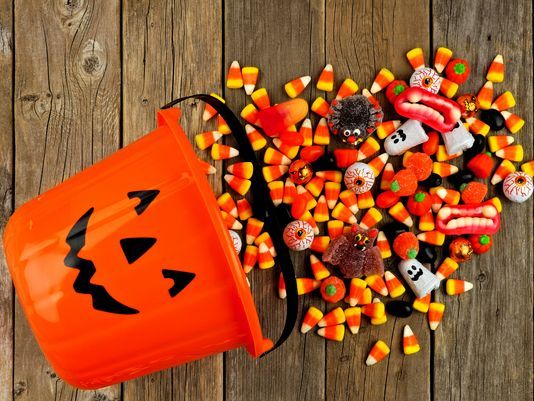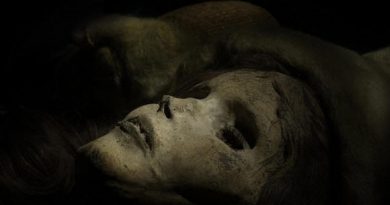Halloween Urban Legends & Myths
Halloween is all about the spooky. From running wild after dark on streets crowded with ghosts, goblins and scary clowns, to curling up for a horror-movie marathon, it’s a holiday that loves to flirt with fear. But there is one dark force so horrifying that even on this haunting holiday we must resist its efforts to confuse and beguile us: the spread of fake stories on social media.
To ward off the evil spirits of misinformation, be wary of these five commonly shared Halloween myths.
Myth No. 1: People are poisoning the candy
Razor blades. Poison. Pins. LSD. They’ve all been planted in Halloween candy over the years by sadistic adults intent on harming strangers’ children, we’ve been told. In recent years, images of nails and other foreign objects in Halloween candy have swept across social media.
But the tales of tainted treats are urban myths.
Joel Best, a professor of sociology and criminal justice at the University of Delaware, looked at reported incidents of “Halloween sadism” going back to 1958. Best said he was “unable to find a substantiated report of a child being killed or seriously injured by a contaminated treat in the course of trick-or-treating.”
The only proven case of a child dying from poisoned Halloween candy occurred in Pasadena, Texas, in 1974. But Timothy O’Bryan’s father, not a stranger, put cyanide in the 8-year-old’s Pixy Stix. Ronald Clark O’Bryan, sometimes called the Candy Man and the Man Who Killed Halloween, was executed for the crime in 1984.
Reported incidents are normally hoaxes. “Typically this is done by the kids,” Best said. Today it’s easy to stick something in your candy, whip out your phone, snap a picture and get it out on social media, he said.
Of course, there’s no harm in checking the candy. At the very least, it’s a great excuse to sample the goods. And for many Americans it’s is a lot harder to swallow the idea that strangers aren’t poisoning random children than stories that they are.
Myth No. 2: It’s open season on black cats
If you believe what you see on social media, Halloween is like The Purge for black cats. The fear that people are adopting black cats to torture or sacrifice around the holiday is so great that some animal shelters don’t allow the animals to be adopted close to Halloween.
The Animal Welfare League outside Chicago puts all black cats and black rabbits in a separate room about a week before Halloween and doesn’t put them back up for adoption until two days after, explained the league’s president and executive director Linda Estrada.
Estrada concedes that animals, especially cats, are at risk of abuse all year. She said she puts away the black cats and rabbits at Halloween “just to be on the safe side.”
“We don’t want to see even one animal fall into bad hands,” she said.
She said a black cat was brought into the clinic the day after Halloween one year with initials burned onto its flesh.
Concerns about the ritualistic torture of animals around Halloween were more widespread in the 1980s and 1990s, when fears of secret Satanic cults were at their zenith. Many shelters have since abandoned the policy of hiding black cats, and the American Society for the Prevention of Cruelty to Animals says, “There is no reason to believe that these cats are at risk.”
“While it is true that animals too often become the victims of holiday pranks and cruelty, there is no reason to believe that witches are involved, or that shelters are a source,” the ASPCA website says. The group says shelters should follow normal adoption procedures at Halloween.
“Continued publicity on this tends to make adoption counseling procedures look arbitrary and silly,” the ASPCA says.
Myth No. 3: Satan is the reason for the season
Many Americans believe Halloween is rooted in Satanic worship. For decades, Christian Broadcast Network founder Pat Robertson denounced the holiday as a “demonic ritual” and “a night when the devil rejoices.”
“Mother, don’t let your babies grow up to be demon worshipers,” Robertson advised in 2016, borrowing from Willie Nelson. “Don’t let them do it.”
Robertson and some other pastors may see Satan’s hand in Halloween, tracing the holiday to pagan and druidic customs, but the devil is in the details.
Some scholars trace Halloween’s roots to an ancient Celtic festival known as Samhain, which some say was associated with communing with the dead. Others, like Nicholas Rogers, author of Halloween: From Pagan Ritual to Party Night, argue very little is actually known about the feast beyond celebrating the harvest season.
Rogers also says that people stopped celebrating Samhain long before “Satanism” was even a thing. “Satanism is essentially a Christian creation,” he said, and “incompatible with the polytheism of the ancient Celts.”
Henry Kelly, a professor of English at UCLA and author of Satan: A Biography, said Halloween is best understood as a product of 18th-century folklore traditions of Scotland and Ireland.
“Efforts to connect it with anything earlier are bogus,” Kelly said.
The holiday’s strongest roots sprout from Catholic traditions. The name is derived from All Hallow’s Eve, the evening before All Saints’ Day two nights before All Souls Day.
So, instead of worrying about the devil, Kelly advises evangelicals like Robertson to just “relax and have a good time.”
Myth No. 4: It’s all about the pumpkins
It’s hard to imagine Halloween without carving pumpkins to make jack-o’-lanterns. But the original jack-o’-lanterns were carved from turnips and carried a candle to represent a soul trapped in purgatory, according to Rogers.
Rogers, a Halloween historian, said people in England would sometimes carry the turnips while “souling,” a ritual that included people going door-to-door to ask for food in exchange for prayers for the dead.
One popular story behind the origin of the jack-o’-lantern stems from an Irish myth about “Stingy Jack” who conned the devil in a bar bet. Having angered both God and Satan with his antics, Jack was not welcomed in heaven or hell and was forced to walk the earth with only a burning lump of coal in a carved-out turnip to guide him.
Myth No. 5: ‘The Legend of Sleepy Hollow’ is a Halloween story
Washington Irving’s story, The Legend of Sleepy Hollow, has been called “one of the best known Halloween tales,” “New York’s ultimate Halloween story,” and “America’s Halloween carol.”
Sleepy Hollow, N.Y., changed its name from North Tarrytown in 1996 to rebrand itself as a spooky tourist destination after General Motors closed its Hudson River plant.
Halloween is the town’s peak season. The travel guideFodor’s says, “there’s no better place to celebrate the holiday than Sleepy Hollow.”
The only problem: “The Legend of Sleepy Hollow had nothing to do with Halloween,” according to Kelly, the UCLA professor.
The story never mentions Halloween, which was not widely known or celebrated in America when Irving wrote his tale.
Brian Jay Jones, author of Washinton Irving: An American Original, says it’s a quintessentially Halloween story, all the same.
“If Irving didn’t invent Halloween then he should have,”said Jones. Irving blended German and Dutch folklore to craft “the first real American horror story,” he said.
While Irving may not have explicitly had Halloween in mind when he wrote Sleepy Hollow, the story is set in autumn and “feels like a Halloween story” because it is packed with the sights, sounds and tastes of the season, Jones said.



